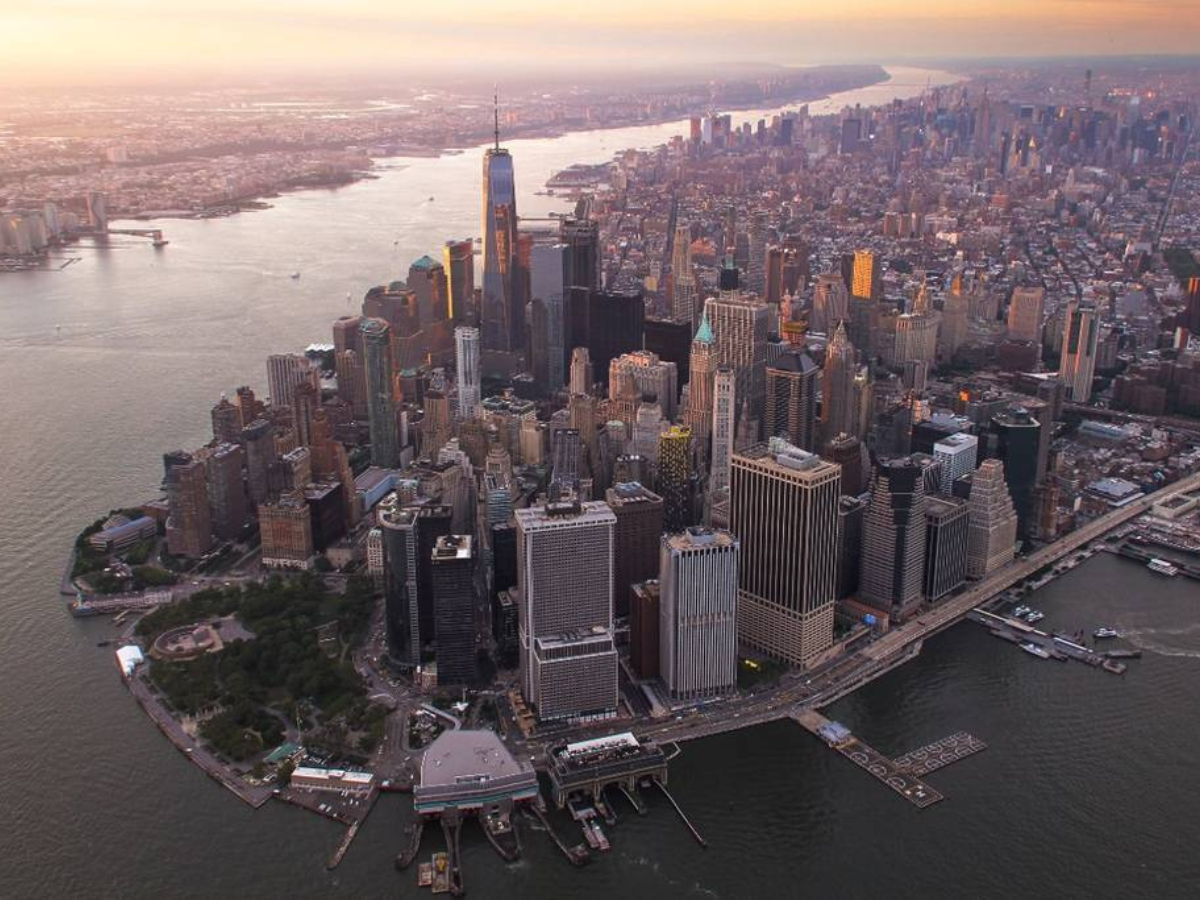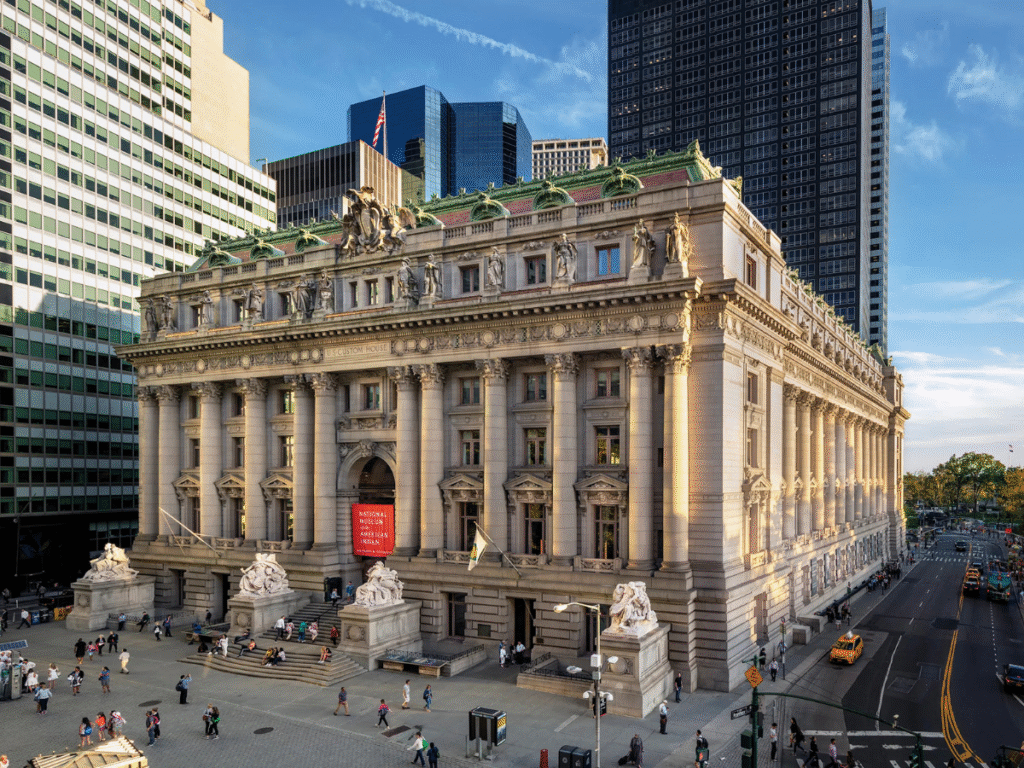Ever wondered what it would feel like to sip your morning coffee in a city where the rent alone could buy you a small villa elsewhere? Welcome to the world’s most expensive cities, where luxury is standard—and so is the staggering price tag. From the neon-lit buzz of Asia’s financial hubs to Europe’s postcard-perfect streets and America’s bustling metropolises, the cost of living in these urban jungles tells its own story.
And yet—people can’t seem to stay away. In this list, we’re breaking down the 10 most expensive cities to live in for 2025, giving you a glimpse of what makes them so outrageously costly and why, despite the sticker shock, millions still call them home.
So, which city claimed the crown this year? Let’s just say your bank account might want to look away.
Thinking about packing your bags for New York, Geneva, or London? Better check your savings first. Some cities don’t just offer world-class skylines and cultural perks—they also come with jaw-dropping living costs that can make even the most ambitious dreamers pause.
Each year, Mercer’s Cost of Living City Ranking shows how expensive life can be around the world by comparing housing, food, transport, and daily essentials across 226 cities. The result is a snapshot of the priciest places to live, providing a guide for expats, businesses, and curious readers to understand the financial realities of living in big cities. For 2025, the list highlights which destinations are worth every penny—and which ones will stretch your paycheck thin.
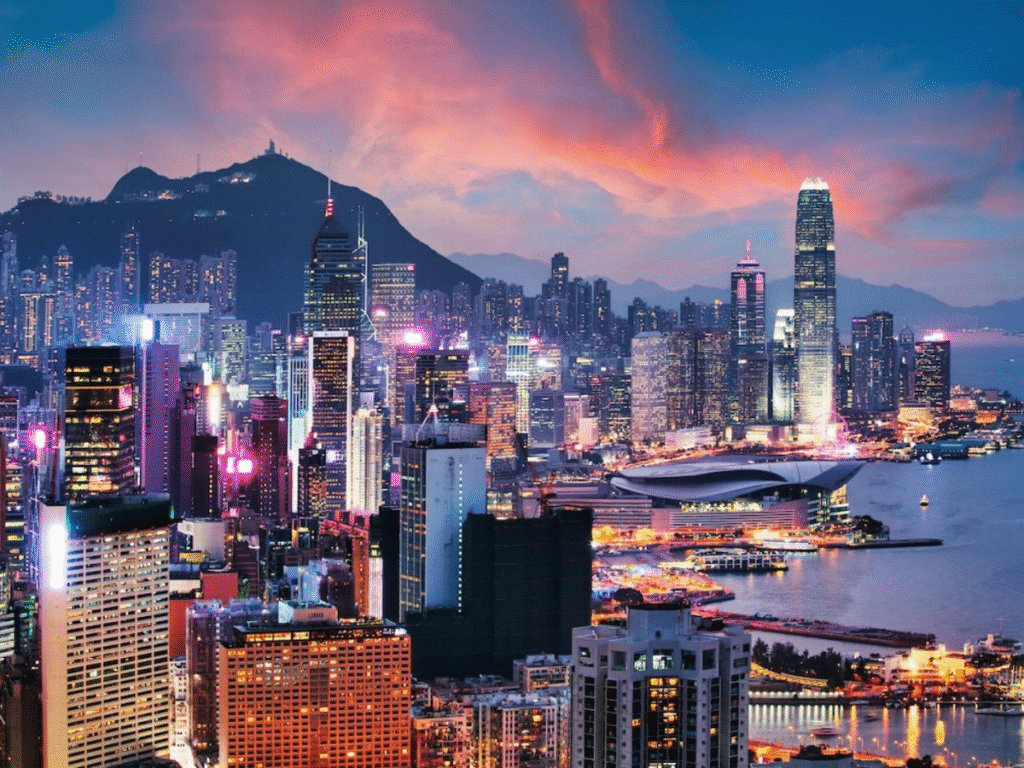
- Area (land): 1,114 km²
- Population: 7.524 Million (2024 World Bank)
- Official Languages: Cantonese / English
- Currency: Hong Kong Dollar (HKD)
- GDP: 407.11 Billion
- Median Monthly Salary: HK$20,500
Living in Hong Kong feels like signing up for a never-ending adrenaline rush—only with a monthly fee that would make most wallets shudder. Space is the city’s greatest luxury, and with nearly 7.5 million people packed into just over a thousand square kilometres, rent prices are sky-high. Even the tiniest shoebox apartments in Central can rival the cost of a family home elsewhere, and everyday essentials like groceries or schooling come with their own hefty prices. It’s no surprise that Hong Kong often ranks as the world’s most expensive city to live in.
Yet despite the sticker shock, people can’t seem to resist. The glittering skyline, world-class dining, bustling nightlife, and the relentless energy of a city that never truly slows down make Hong Kong irresistible. Sure, your bank account might take a hit, but the thrill of living here—the fusion of East and West, tradition and innovation—feels priceless to many who proudly call it home.
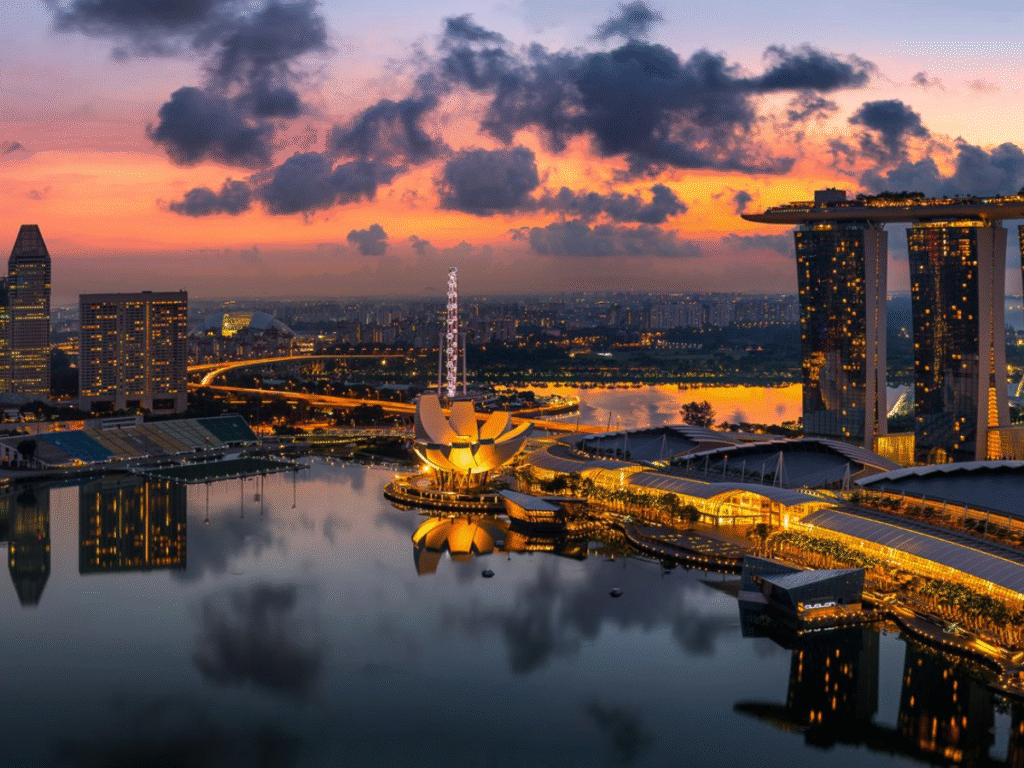
- Area: 734 km²
- Population: 6.036 Million (2024 World Bank)
- Official Languages: English, Malay, Singaporean Mandarin, & Tamil
- Currency: Singapore Dollar (SGD)
- GDP: 547.39 Billion
- Median Monthly Salary: SGD $5,197
Singapore may be tiny in size, but when it comes to the cost of living, it packs one heavyweight punch. With limited land for development, real estate prices soar to dizzying heights, making housing the largest expense for both locals and expats. Add to that the high costs of owning a car (due to the well-known Certificate of Entitlement system) and premium prices for imported goods, and daily life here suddenly feels like a luxury lifestyle subscription. It’s no wonder Singapore often ranks highly in global cost-of-living surveys.
Despite the high costs, people continue to pay happily. Why? Because Singapore uniquely combines top-tier efficiency, safety, and cleanliness with a lively cultural scene. Its culinary landscape ranges from bustling hawker stalls to Michelin-starred restaurants, while its status as a financial hub attracts constant opportunities. The city’s impressive skyline, abundant green areas, and seamless mix of modern and traditional elements demonstrate that, although living here is costly, it offers exceptional rewards.
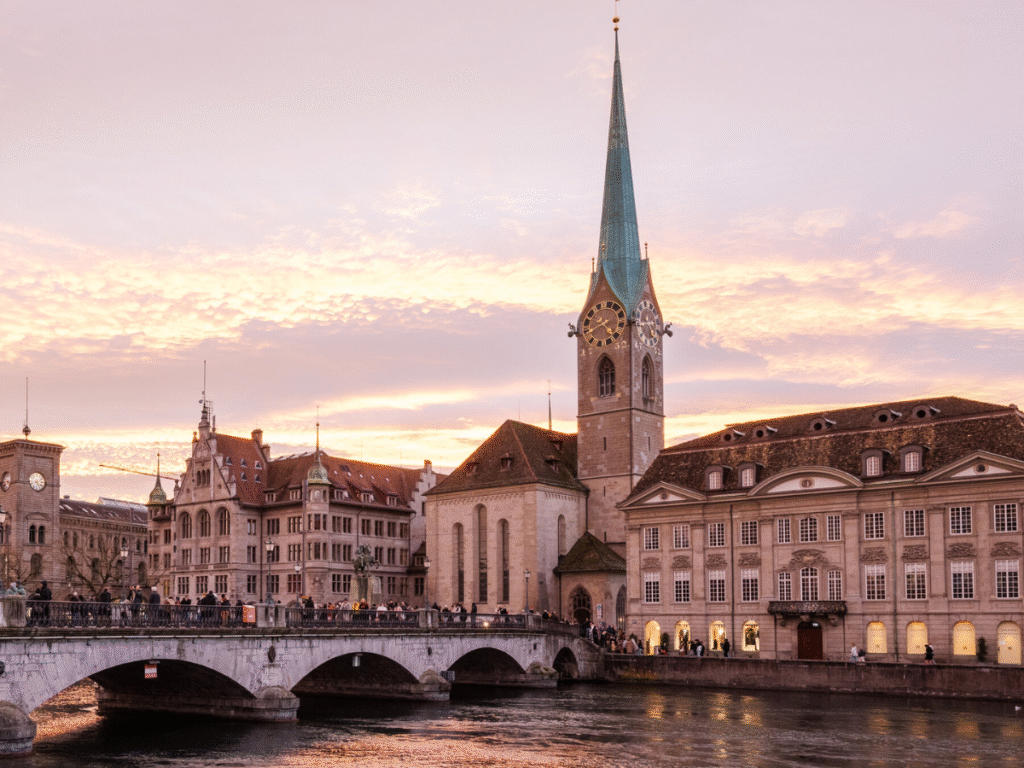
- Area: 91.9 km²
- Elevation: 408 m
- Population: 423,000 (2021 Common Data)
- Official Language: German
- Currency: Swiss Franc (CHF)
- Median Monthly Salary: CHF 7,800
Zurich might be Switzerland’s largest city, but it feels more like a perfectly polished village dressed up in a luxury suit. With its snowcapped Alps in the distance, the shimmering Lake Zurich at its centre, and cobblestone streets lined with history, this is the kind of place where every postcard view is real life. Of course, that picture-perfect charm comes with a cost. Housing here is sky-high, a quick grocery run could feel like a fine dining experience, and grabbing drinks with friends often comes with a bill that makes you double-check if you accidentally ordered champagne.
What pushes prices so high prices? Zurich is both a global financial centre and a lifestyle capital. High wages support high prices, creating a cycle where everything—from rent to transportation to healthcare—remains on the upper end. But people aren’t just paying for essentials; they’re paying for precision. Public services are efficient, infrastructure is pristine, and trains really do run like clockwork. Living here is like buying into the Swiss promise of quality—flawless, but costly.
Ask anyone who has made Zurich their home, and they’ll confirm it’s worth it. The city provides exceptional access to nature, a lively cultural scene, and one of the safest and most organized ways of life globally. Zurich isn’t merely where you reside—it’s a place where you flourish, as long as your budget can match the pace of the Swiss Franc.
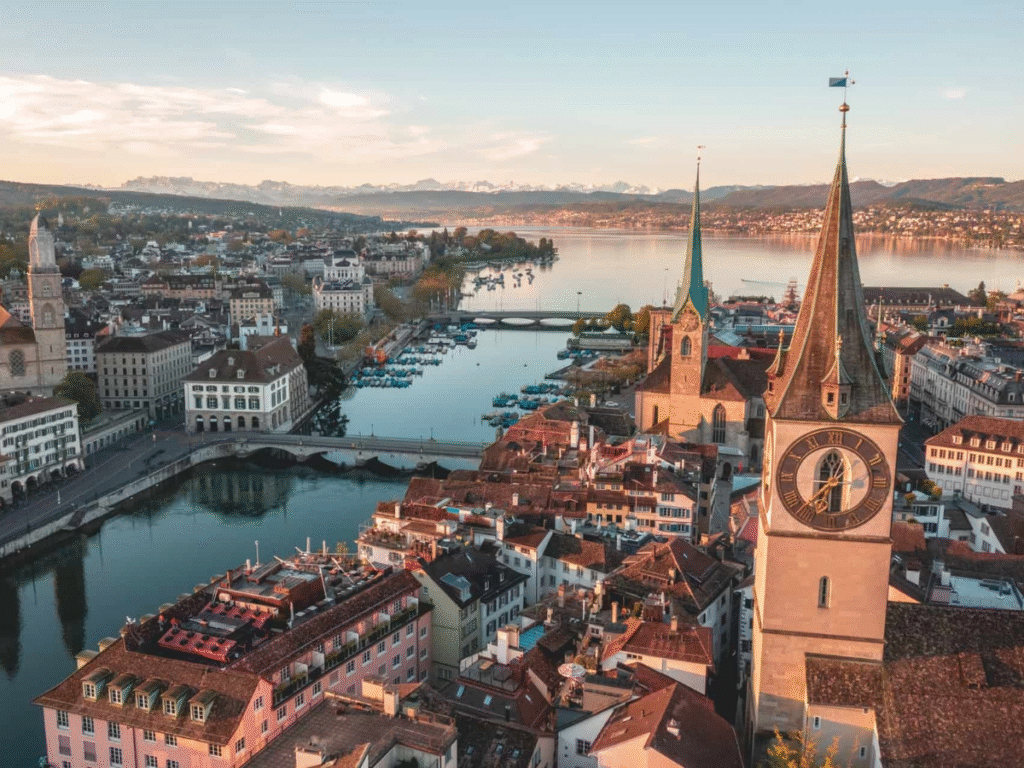
- Area: 15.9 km²
- Elevation: 375 m
- Population: 644,513 (Common Data)
- Official Language: French
- Currency: Swiss Franc (CHF)
- Median Monthly Salary: CHF 7,200
Geneva is a city where luxury isn’t just present—it feels like part of the air you breathe. Situated along the shores of Lake Geneva with the magnificent Alps in the distance, it’s a postcard-perfect locale that hosts diplomats, bankers, and jet-setters. But with that prestige comes a hefty price tag. Housing is notoriously costly, daily essentials are more expensive than in most parts of Europe, and dining out at even a casual café can leave your credit card gasping.
The city’s reputation as a global hub elevates living costs. Geneva hosts the United Nations, the World Health Organization, numerous NGOs, and a vibrant financial sector—attracting an international crowd willing (and able) to pay a premium for a piece of this cosmopolitan city. It’s also the birthplace of haute horlogerie, home to some of the world’s most esteemed Swiss watchmakers, which further enhances its image as a global centre of sophistication. When you’re surrounded by boutiques selling timepieces worth more than cars, it’s no surprise that everyday living tends to be more expensive.
Yet Geneva’s charm makes the cost easier to accept. Picture weekends sailing on Lake Geneva, skiing in the Alps just an hour away, or strolling through stylish streets filled with chocolatiers and watch shops. Combine that with safety, top-notch healthcare, and an international atmosphere that effortlessly blends cultures, and it’s no surprise so many are willing to pay the high price of calling Geneva home.
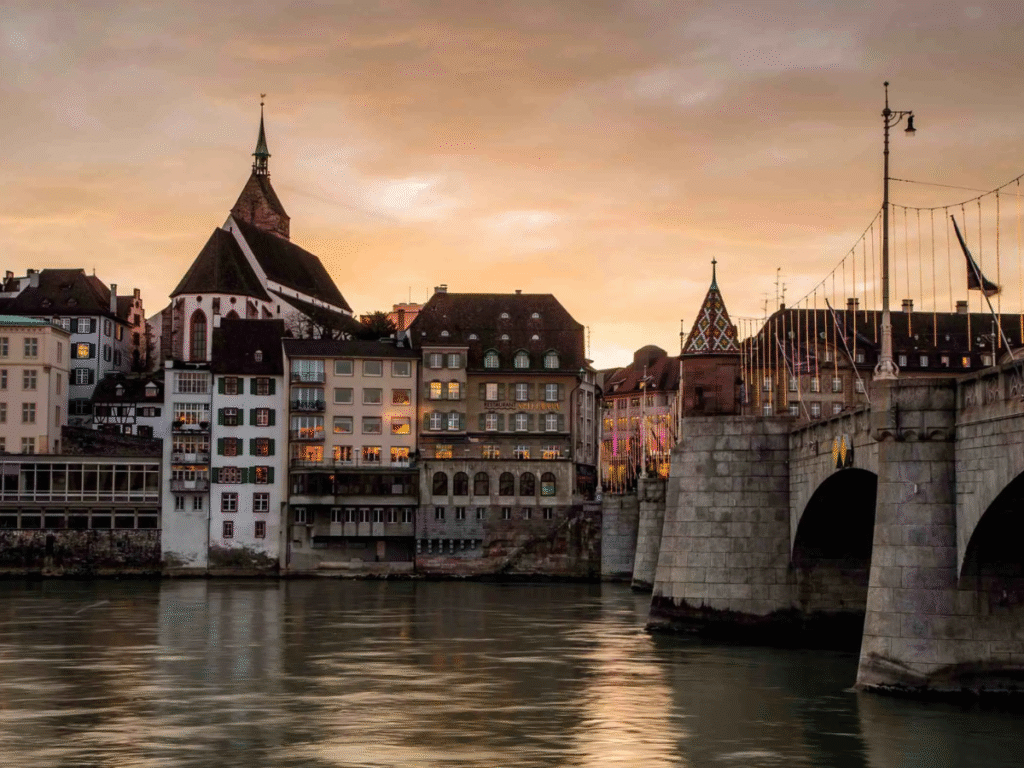
- Area: 23.9 km²
- Elevation: 261m
- Population: 578,700 (Common Data)
- Official Language: German
- Currency: Swiss Franc (CHF)
- Median Monthly Salary: CHF 7,200
Basel may not always grab the spotlight from Zurich or Geneva, but it certainly competes with them in terms of cost. Located at the crossroads of Switzerland, France, and Germany, Basel is a cultural and economic hub where living costs climb just as quickly as the trams weaving through its streets. Rent is steep, groceries are pricey, and even a simple night out can feel like a luxury. As a global centre for pharmaceuticals and life sciences, salaries are generous — but so are the expenses.
Basel offers more than just business; it stands out as a cultural hub. Famous for the renowned Art Basel fair and a diverse range of museums, it attracts international visitors willing to spend top dollar on a vibrant cultural experience. The scenic Rhine River, efficient public transportation, and convenient trips to France or Germany further boost its appeal. These factors help explain why Basel remains both costly and highly attractive.
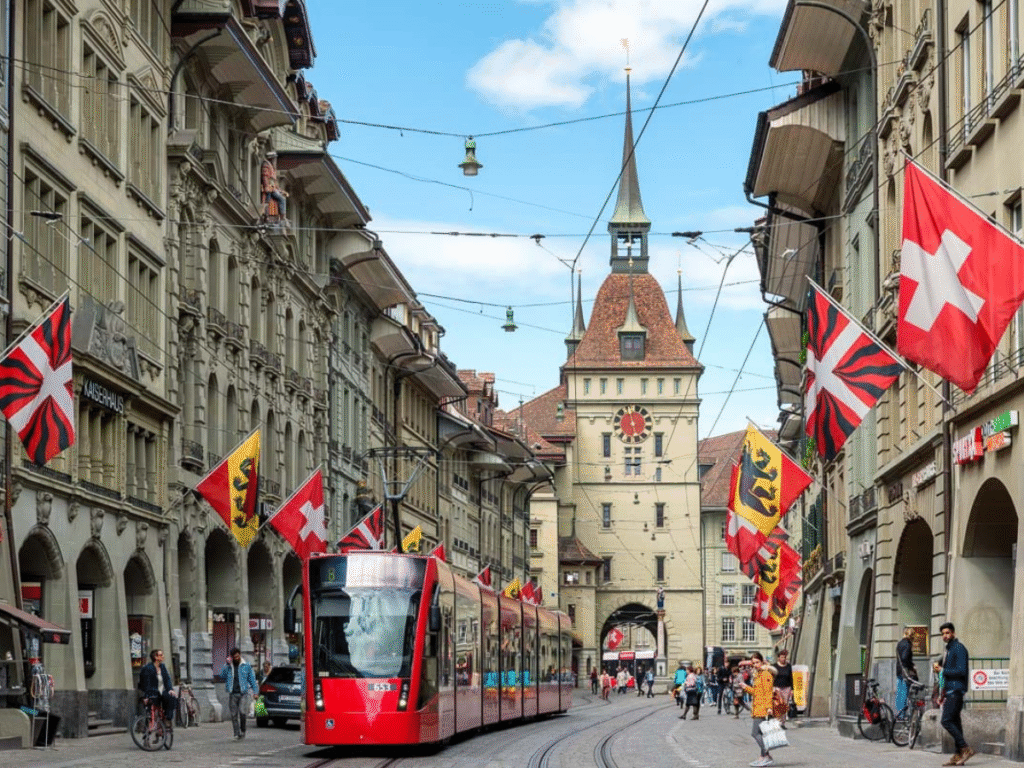
- Area: 51.6 km²
- Elevation: 540m
- Population: 448,100 (Common Data)
- Official Language: German/French
- Currency: Swiss Franc (CHF)
- Median Monthly Salary: CHF 6,900
As the capital of Switzerland, Bern manages to blend political significance with old-world charm—and the cost of living here reflects that mix. Housing expenses are steep, groceries strain your budget, and even a casual café visit can quickly turn into a costly treat. Though it’s smaller than Zurich or Geneva, Bern isn’t behind in costs, mainly because of its role as the nation’s political centre and a hub for international organisations. Salaries are solid, but everyday life still bears the hallmark Swiss price tag.
What makes Bern special is its balance of heritage and livability. With its UNESCO-listed old town, winding cobblestone streets, and the Aare River meandering through the city, it feels like stepping into a postcard. Yet, it’s also efficient, safe, and well-connected, offering residents the polished quality of life that Switzerland is known for. Living in Bern may strain your bank account, but it rewards you with an atmosphere that blends history, culture, and modern convenience in one very expensive package.
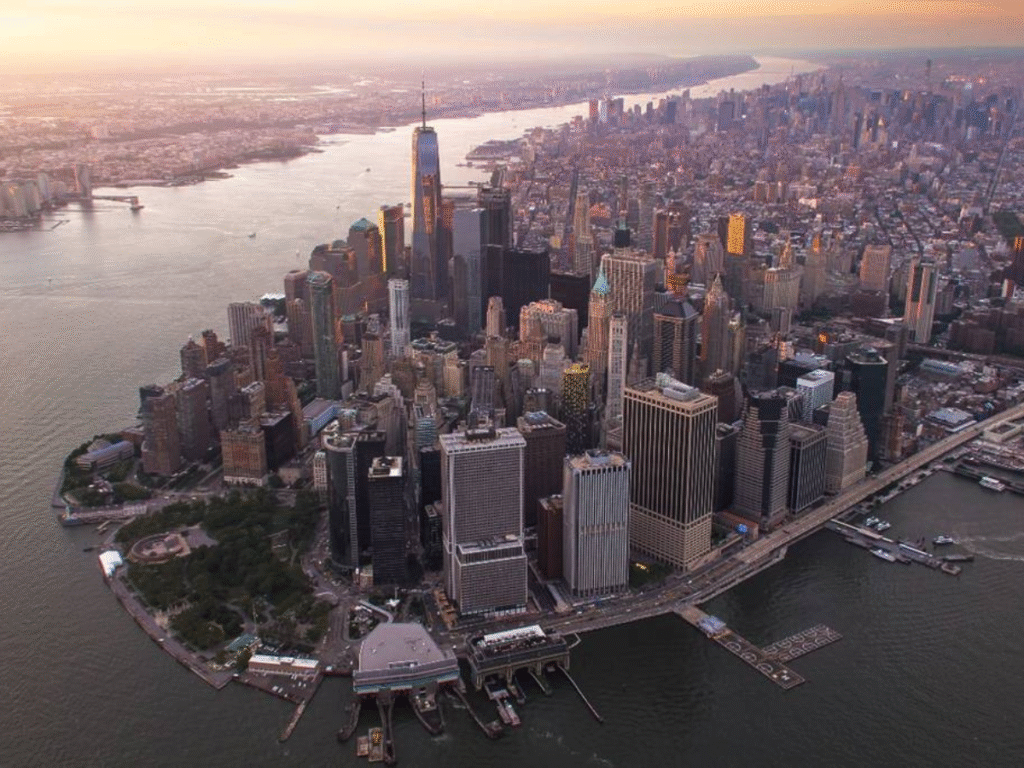
- Area: 783.8 km²
- Population: 7.936 Million (World Population Review)
- Official Language: English
- Currency: US Dollar (USD)
- GDP: 1.286 Trillion
- Median Monthly Salary: USD $6,700
New York City epitomizes a city that never sleeps—and neither does the cost of living. Housing remains a central issue, with rents that can match mortgages in many parts of the world. From tiny Manhattan studios to stylish Brooklyn lofts, living spaces are limited and highly sought after, driving prices skyward. Combine that with expensive utilities, childcare, and transportation, and simply managing daily life can feel like running an endless financial marathon.
Food and entertainment are also expensive. A quick trip to the grocery store can drain your wallet faster than expected, and while the city’s dining scene is famous, eating out often is a luxury few can afford without planning. Even simple pleasures—a baseball game, a Broadway show, or a night at a rooftop bar—cost a lot. New York doesn’t just test your budget; it pushes you to keep up with its relentless pace.
Nevertheless, people keep returning. New York offers something few cities worldwide can match: limitless opportunities. It’s a melting pot of cultures, a global business hub, and a stage for ambition. The energetic atmosphere, inspiring diversity, and the mindset that “anything is possible” drive millions to chase their dreams. Although your bank account might take a hit, the lifestyle and opportunities in the Big Apple? Truly invaluable.
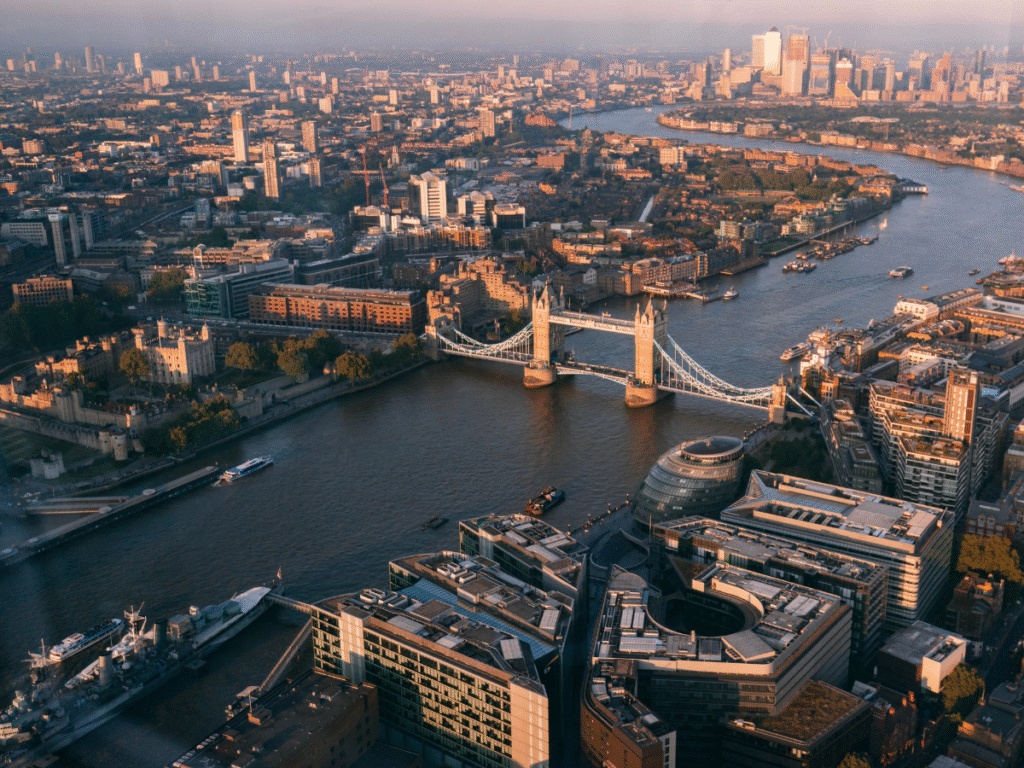
- Area: 1,572 km²
- Population: 9 million (2024 estimate)
- Official Language: English
- Currency: Pound Sterling (GBP)
- GDP: £617.915 billion
- Median Monthly Salary: ~ GBP £3,000
London is a city where history meets modern hustle, and unfortunately, where rent hits the stratosphere. Housing costs are notoriously high, especially in central boroughs like Kensington or Chelsea, where apartments can command eye-watering prices. Add in council tax, utilities, and transportation on the iconic but costly Tube, and you start to see why living in London requires deep pockets. Even modest lifestyles here stretch budgets further than in most European capitals.
The city’s status as a global financial hub doesn’t help lower costs. With large sums flowing through the City of London and Canary Wharf, competition for housing and services remains intense. Dining out, whether at a cozy pub or a Michelin-starred restaurant, is never cheap, and tickets for theatre in the West End or football at Stamford Bridge remind you that leisure is a luxury. Even grabbing a pint after work can leave your wallet lighter than expected.
But London’s appeal is undeniable. It’s a cultural hub full of museums, galleries, and nightlife, where tradition and innovation blend together. From passing Buckingham Palace on your morning commute to enjoying the energy of Shoreditch after dark, London offers a lifestyle as lively as it is demanding. Expensive? Certainly. But for many who choose to live here, the city’s energy, history, and opportunities make the high price tag worth every pound.

- Area: 207 km²
- Population: 322,600 (World Population Review)
- Official Language: English
- Currency: Bahamian Dollar (BSD), Pegged 1:1 With USD
- GDP: 15.83 Billion
- Median Monthly Salary: BSD $2,600
Nassau may be a tropical paradise with turquoise waters and white sandy beaches, but living here is far from cheap. As the capital of the Bahamas and its main economic hub, Nassau carries the highest living costs in the Caribbean. Housing is expensive, utilities are steep, and because so much is imported—from groceries to cars—prices for everyday items are consistently high. Even a simple grocery trip or dinner out can leave locals and expats alike with sticker shock.
Tourism drives much of Nassau’s economy, and that comes with a premium lifestyle tax. Resorts, luxury developments, and demand from wealthy international visitors push up costs across the board. While salaries are modest compared to global metropolises, the day-to-day expenses feel closer to big-city living, making Nassau one of the most challenging (and expensive) places to balance income with expenses.
But the city’s appeal is undeniable. Imagine stepping out your door to beaches that look like postcards, enjoying year-round sunshine, and living where others dream of vacationing. Nassau blends island charm with modern energy, offering a lifestyle that feels like an endless holiday—if your wallet can keep up. For many, the beauty, climate, and laid-back atmosphere make the high price tag worth paying to call this island city home.

- Area: 1,302 km²
- Population: 3.9 Million
- Official Language: English
- Currency: US Dollar (USD)
- GPD:
- Median Monthly Salary: USD $6,200 (2024 estimate)
Los Angeles is the city of sunshine, palm trees, and Hollywood glamour—but living here comes with a blockbuster-sized price tag. Housing is the biggest expense, with homes and apartments in desirable neighbourhoods like Santa Monica, Beverly Hills, or West Hollywood reaching staggering levels. Even modest rentals in less central areas are costly, and rising property values make owning a home feel like winning the lottery. Combine that with high utility bills and insurance costs, and just having a roof over your head in LA can be a major financial production.
Transportation adds another layer to the cost of living in LA. Unlike New York, where you can rely on the subway, LA is a city designed for cars. Owning one isn’t optional — it’s vital. Gas, insurance, maintenance, and the notorious traffic all add up on your monthly expenses. Then there’s the lifestyle: dining in trendy restaurants, staying current with health-conscious food trends, and enjoying the city’s endless entertainment choices. Even “casual” nights out tend to drain wallets in Los Angeles.
People are drawn to LA by the dream. It’s a centre for entertainment, startups, and tech, with sunshine almost every day. Beaches, trails, celebrity culture, and opportunities attract many. While the high cost of living might seem like a dramatic plot twist, the chance to chase the California dream keeps millions here, scripts and all.
| Rank | City | Country |
|---|---|---|
| 1 | Hong Kong | Hong Kong |
| 2 | Singapore | Singapore |
| 3 | Zurich | Switzerland |
| 4 | Geneva | Switzerland |
| 5 | Basel | Switzerland |
| 6 | Bern | Switzerland |
| 7 | New York City | United States Of America |
| 8 | London | United Kingdom |
| 9 | Nassau | Bahamas |
| 10 | Los Angeles | United States Of America |
| 11 | Copenhagen | Denmark |
| 12 | Honolulu | United States Of America |
| 13 | San Francisco | United States Of America |
| 14 | Bangui | Central African Republic |
| 15 | Dubai | United Arab Emirates |
| 16 | Tel Aviv | Israel |
| 17 | Miami | United States Of America |
| 18 | Dijbouti | Dijbouti |
| 19 | Boston | United States Of America |
| 20 | Chicago | United States Of America |
| 21 | N’Djamena | Chad |
| 22 | Washington | United States Of America |
| 23 | Shanghai | China |
| 24 | Vienna | Austria |
| 25 | Beijin | China |
| 26 | Conakry | Guinea Republic |
| 27 | Atlanta | United States Of America |
| 28 | Seattle | United States Of America |
| 29 | Paris | France |
| 30 | Amsterdam | Netherlands |
| 31 | Berlin | Germany |
| 32 | Souel | South Korea |
| 33 | Mexico City | Mexico |
| 34 | Shenzhen | China |
| 35 | Frankfurt | Germany |
| 36 | San Jose | Costa Rica |
| 37 | Brussels | Belgium |
| 38 | Munich | Germany |
| 39 | Dakar | Senegal |
| 40 | Helsinki | Finland |
| 41 | Dublin | Ireland |
| 42 | Montevideo | Uruguay |
| 43 | Abu Dhabi | United Arab Emirates |
| 44 | The Hague | Netherlands |
| 45 | Libreville | Gabon |
| 46 | Philadelphia | United States Of America |
| 47 | Luxemboug | Luxemboug |
| 48 | San Juan | Puerto Rico |
| 49 | Tokyo | Japan |
| 50 | Houston | United States Of America |
| 51 | Dusseldorf | Germany |
| 52 | Oslo | Norway |
| 53 | Edinburgh | Scotland |
| 54 | Hamburg | Germany |
| 55 | Dallas | United States Of America |
| 56 | Prague | Czech Republic |
| 57 | Milan | Italy |
| 58 | Sydney | Australia |
| 59 | Minneapolis | United States Of America |
| 60 | Noumea | New Caledonia |
| 61 | Riga | Latvia |
| 62 | Pittsburgh | United States Of America |
| 63 | Douala | Cameroon |
| 64 | Victoria | Seychelles |
| 65 | Portland | United States Of America |
| 66 | Barcelona | Spain |
| 67 | Rome | Italy |
| 68 | Glasgow | Scotland |
| 69 | Taipei | Taiwan |
| 70 | Stuttgart | Germany |
| 71 | Guangzhou | China |
| 72 | St. Louis | United States Of America |
| 73 | Melbourne | Australia |
| 74 | Brazzaville | The Republic Of Congo |
| 75 | Lyon | France |
| 76 | Madrid | Spain |
| 77 | Buenos Aires | Argentina |
| 78 | Birmingham | United Kingdom |
| 79 | Kinshasa | The Democratic Republic Of Congo |
| 80 | Abidjan | Cote d’lvoire |
| 81 | Detroit | United States Of America |
| 82 | Aberdeen | United Kingdom |
| 83 | Bratislava | Slovakia |
| 84 | Cleveland | United States Of America |
| 85 | Nuremburg | Germany |
| 86 | Leipzig | Germany |
| 87 | Belfast | United Kingdom |
| 88 | Busan | South Korea |
| 89 | Brisbane | Australia |
| 90 | Riyadh | Saudia Arabia |
| 91 | Yaounde | Cameroon |
| 92 | Toronto | Canada |
| 93 | Qingdao | China |
| 94 | Pointe-A-Pitre | Guadeloupe (France) |
| 95 | Toulouse | France |
| 96 | Tallinn | Estonia |
| 97 | Jeddah | Saudi Arabia |
| 98 | Accra | Ghana |
| 99 | Kingston | Jamaica |
| 100 | Lisbon | Portugal |
| 101 | Vancover | Canada |
| 102 | Stockholm | Sweden |
| 103 | Tirana | Albania |
| 104 | Athens | Greece |
| 105 | Nanjing | China |
| 106 | Canberra | Australia |
| 107 | Adelaide | Australia |
| 108 | Amman | Jordan |
| 109 | Perth | Australia |
| 110 | Manama | Bahrain |
| 111 | Auckland | New Zealand |
| 112 | Shenyang | China |
| 113 | Vilnius | Lithuania |
| 114 | Port Of Spain | Trinidad & Tobago |
| 115 | Monterrey | Mexico |
| 116 | Harare | Zimbabwe |
| 117 | Ljubljana | Slovenia |
| 118 | Montreal | Canada |
| 119 | Kuwait City | Kuwait |
| 120 | Bamako | Mali |
| 121 | Doha | Qatar |
| 122 | Muscat | Oman |
| 123 | Phnom | Cambodia |
| 124 | Sao Paulo | Brazil |
| 125 | Chengdu | China |
| 126 | Ottawa | Canada |
| 127 | Guatemala City | Guatemala |
| 128 | Lome | Togo |
| 129 | Bangkok | Thailand |
| 130 | Istanbul | Türkiye |
| 131 | Manlia | The Philippines |
| 132 | Taichung | Taiwan |
| 133 | Suzhou | China |
| 134 | Chongqing | China |
| 135 | Warsaw | Poland |
| 136 | Mumbai | India |
| 137 | Zagreb | Croatia |
| 138 | Addis Ababa | Ethiopia |
| 139 | Xian | China |
| 140 | Dhaka | Bangladesh |
| 141 | Calgary | Canada |
| 142 | Cotonou | Benin |
| 143 | Budapest | Hungary |
| 144 | Ouagadougou | Burkina Faso |
| 145 | Wellington | New Zealand |
| 146 | Osaka | Japan |
| 147 | Wuhan | China |
| 148 | Quito | Ecuador |
| 149 | Kaohsiung | Taiwan |
| 150 | Rio De Janeiro | Brazil |
| 151 | Panama City | Panama |
| 152 | Niamey | Niger |
| 153 | Casablanca | Morocco |
| 154 | Yokohama | Japan |
| 155 | Bucharest | Romania |
| 156 | Yerevan | Armenia |
| 157 | Jakarta | Indonesia |
| 158 | Luanda | Angola |
| 159 | Belgrade | Serbia |
| 160 | Santiago | Chile |
| 161 | Nagoya | Japan |
| 162 | Sofia | Bulgaria |
| 163 | Limassol | Cyprus |
| 164 | Maputo | Mozambique |
| 165 | New Dehli | India |
| 166 | Lima | Peru |
| 167 | Santo Domingo | Dominican Republic |
| 168 | Cairo | Eygpt |
| 169 | Wroclaw | Poland |
| 170 | Bujumbura | Burundi |
| 171 | Baku | Azerbijan |
| 172 | Hanol | Vietnam |
| 173 | Rabat | Morocco |
| 174 | Bogata | Colombia |
| 175 | Krakow | Poland |
| 176 | Bandar Seri Begawan | Brunei |
| 177 | Kampala | Uganda |
| 178 | Ho Chi Minh City | Vietnam |
| 179 | Brasilia | Brazil |
| 180 | San Salvador | El Salvador |
| 181 | Dar es Salaam | Tanzania |
| 182 | Manaus | Brazil |
| 183 | Yangon | Myanmar |
| 184 | Tegucigalpa | Honduras |
| 185 | Beto Horizonte | Brazil |
| 186 | Nouakchott | Mauritania |
| 187 | Port Louis | Mauritius |
| 188 | Tbilisi | Georgia |
| 189 | Chennai | India |
| 190 | Colombo | Sri Lanka |
| 191 | Almaty | Kazakhstan |
| 192 | Asunción | Paraguay |
| 193 | Antananarivo | Madagascar |
| 194 | Algiers | Algeria |
| 195 | Bengaluru | India |
| 196 | La Paz | Bolivia |
| 197 | Managua | Nicaragua |
| 198 | Skopje | Republic Of Macedonia |
| 199 | Kigali | Rwanda |
| 200 | Kuala Lampur | Malaysia |
| 201 | Nairobi | Kenya |
| 202 | Hyderabad | India |
| 203 | Sarajevo | Bosnia & Herzegovina |
| 204 | Banjul | Gambia |
| 205 | Pune | India |
| 206 | Johannesburg | South Africa |
| 207 | Kolkata | India |
| 208 | Ankara | Türkiye |
| 209 | Cape Town | South Africa |
| 210 | Tunis | Tunisia |
| 211 | Vientiane | Lao People’s Democratic Republic |
| 212 | Minsk | Belarus |
| 213 | Lusaka | Zambia |
| 214 | Johor Bahru | Malaysia |
| 215 | Gaborone | Botswana |
| 216 | Tashkent | Uzbekistan |
| 217 | Havana | Cuba |
| 218 | Windhoek | Namibia |
| 219 | Durban | South Africa |
| 220 | Dushanbe | Tajikistan |
| 221 | Blantyre | Malawi |
| 222 | Karachi | Pakistan |
| 223 | Bishkek | Kyrgyzstan |
| 224 | Islamabad | Pakistan |
| 225 | Lagos | Nigeria |
| 226 | Abuja | Nigeria |
One of the clearest takeaways from Mercer’s ranking is that global hubs with strong economies and high demand tend to top the list. Cities like Hong Kong, Singapore, and Zurich exemplify the perfect mix of limited space, strong currencies, and international appeal. Switzerland stands out in particular, with four cities in the Top 10—a sign that high wages and premium services go hand in hand with rising daily expenses. Meanwhile, in Asia, the dense population and competition for housing continue to drive costs higher year after year.
But it’s not just about housing and salaries. Currency fluctuations, inflation, and global supply chains all significantly influence the rankings each year. A city can move up or down not because the cost of living suddenly changed, but because exchange rates shifted or import costs fell. The bigger picture shows that while these cities offer exceptional infrastructure, safety, and opportunities, the financial strain on residents is substantial—making affordability a constant balancing act between income and lifestyle.
Housing remains the single most influential factor in shaping the Cost of Living City Ranking. As Mercer explains, “the cost of housing is a major factor in the Cost of Living City Ranking,” and between 2023 and 2024, rental markets experienced extreme volatility globally. Istanbul led with an astonishing 301% increase in average rental prices, while Ankara followed with a 141% rise. Conversely, some cities like Tel Aviv (-22%) and Minsk (-10%) experienced decreases. Even among the world’s Top 10 most expensive cities, rents generally edged upward—albeit more gradually, between 3% and 8%—with Nassau, Bahamas, remaining unchanged.
Mercer points out that these spikes often result from a supply-demand imbalance: “A contributing factor to the cost of housing is a shortage of housing relative to the number of people seeking accommodation. This mismatch between supply and demand is driving up prices for international assignment logistics.” For employees, this means a larger portion of their income is consumed by rent, leaving less disposable income for other expenses and increasing financial stress. For companies, it necessitates increasing compensation packages with housing allowances to stay competitive in high-cost markets, which stretches budgets and adds to the challenge of attracting and retaining global talent.
Safety is becoming more important when comparing expensive cities. Mercer emphasizes that beyond cost, “quality of life, safety and security … have become key factors in a location’s appeal.” In practice, this means that even among high-cost areas, those with low crime, stable politics, and robust emergency services are more valued by residents and employers. Cities like Zurich, Singapore, and Geneva are not just costly—they are also among the safest worldwide, which helps justify many of the trade-offs people accept. Conversely, if housing and living costs are high but safety is seen as weak, it can significantly reduce the overall quality of life.
On the opposite end of Mercer’s ranking are cities like Havana (Cuba), Windhoek (Namibia), and Karachi (Pakistan), which are among the most affordable places to live. Housing, food, and transportation costs are much lower here, often due to weaker currencies, lower international demand, or generally modest income levels compared to global standards. While these cities may lack some of the infrastructure, stability, or services found in their more expensive counterparts, they underscore the stark contrast between affordable living and the sky-high costs of global centres like Hong Kong, Singapore, or Zurich.
Behind the eye-catching headlines and jaw-dropping rental prices, Mercer’s Cost of Living City Ranking relies on one of the most detailed surveys of its kind. Conducted in March 2024, it analysed more than 200 items across 226 cities worldwide, covering everything from housing and transportation to groceries, clothing, and personal care. New York City is used as the base city, with all data converted into US dollars, ensuring inflation and exchange rates are factored into the results.
To make the findings relatable, Mercer examined not only housing and utilities but also the cost of daily essentials. Their basket of goods includes items such as:
- 12 large eggs
- 1 litre of olive oil
- Espresso coffee at a popular café
- 1 litre of gasoline (unleaded 95 octane)
- Men’s blue jeans
- Women’s shampoo, haircut, and styling
By incorporating both major living costs and everyday expenses into its analysis, Mercer offers a practical snapshot of what life genuinely costs in cities worldwide. The outcome is a ranking that businesses use to develop expat packages and that individuals can reference to assess how far their money may stretch abroad.
And that’s what makes Mercer’s annual study more than just a list — it’s a guide to understanding the global economy through everyday life. Whether you’re dreaming about Hong Kong’s skyline, Zurich’s lakeside charm, or London’s bustling streets, the methodology behind the ranking reveals the true cost of turning those dreams into reality.
